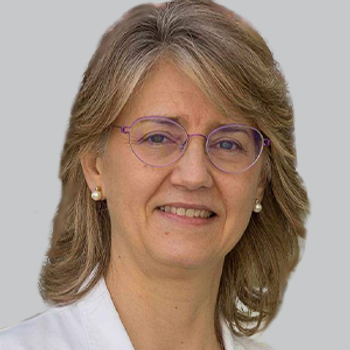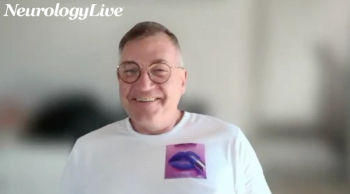
Actigraphy Identified as a Valid Tool for Sleep Assessment in Children With Cerebral Palsy
Investigators developed a weighted logistic regression-based sleep-wake scoring method for actigraphy data, concluding that it aided in assessing sleep in CP.
A recently published study found that actigraphy algorithms provide accurate sleep measures in children with cerebral palsy (CP), offering help to potentially advance the understanding of sleep disturbances in children with CP, and to monitor response to interventions.1
The study included a total of 26 children, 13 of whom had CP and 13 of whom did not. Participants were between the age of 2-17 years and had a mean age of 9 years and 11 months (standard deviation, 4 years, 10 months). Of the patients with CP, 54% (n = 7) were spastic quadriplegic, 23% (n = 3) were spastic diplegic, 15% (n = 2) were spastic hemiplegic, and 8% (n = 1) were unclassified.
Investigators, including corresponding author Amy K. Licis, MD, assistant professor of neurology, division of adult neurology, Washington University School of Medicine in St. Louis, Missouri, obtained wrist and forehead actigraphy with concurrent polysomnography for 1 night, as well as home wrist actigraphy for 1 week. In total, 3 actigraphy algorithms were developed: the weighted logistic regression (WLR) model; the personalized WLR (pWLR), which was trained using patients’ polysomnography (PSG) data in order for feature coefficients to be optimized for unique movement patterns; and the combined WLR (cWLR), which was trained using combined data from a group. Accuracy was evaluated by the agreement with PSG-determined sleep stage vs wake staging, sensitivity was evaluated by sleep detection, and specificity was evaluated by wake detection.
In children with CP, the developed actigraphy algorithms had a median of 72%-80% accuracy, 87%-91% sensitivity, and 60%-71% specificity. For children without CP, the algorithms had a median of 86%-89% accuracy, 88%-92% sensitivity, and 70%-75% specificity. Similar accuracies were observed in the wrist and forehead locations, and accuracy was higher for all methods in the control group when compared with the CP group.
Overall, performance algorithms were compared with existing algorithms, with the new algorithms showing better accuracy for pWLR at 88% (interquartile range [IQR], 76-91) and cWLR at 79% (IQR, 69-88) when compared with the Cole-Kripke method, for which accuracy was 81% (IQR, 63-89). The newly developed algorithms also greatly improved specificity for pWLR at 73% (IQR, 60-84) and cWLR at 64% (IQR, 39-87) when compared with the Cole-Kripke method, which had specificity of 9% (IQR, 2-23). The new algorithms also showed better accuracy and specificity when compared with the Sadeh Method, which had accuracy of 82% (IQR, 60-89) and specificity of 16% (IQR, 4-45). Looking at sensitivity, values were comparable between the algorithms, coming in at 91% for pWLR (IQR, 87-95) and 88% for cWLR (IQR, 77-95).
WATCH NOW: Managing Insomnia: Addressing Shortcomings in OTC Medications
“Our study is the first to use algorithms validated for the assessment of home sleep in children with CP,” Licis et al wrote. “Prior home actigraphy studies using data reported collectively for children with neurodevelopmental disorders, including CP, showed relatively prolonged sleep latency and reduced sleep efficiency. We assessed home sleep actigraphy data in children with CP distinctly and in comparison to a control group. We found that children with CP had higher WASO and shorter TST than children without CP, perhaps due the synergistic sleep-disrupting effects of issues such as pain, obstructive sleep apnea, epilepsy, gastroesophageal reflux, and medication side effects.”
Sixteen participants completed home sleep actigraphy, including 8 from the CP group for a total of 42 nights and 8 in the control group for a total of 46 nights. The CP group had longer wake after sleep onset (WASO) when compared with the control group (181 vs 113 minutes; P = .04), further resulting in a lower decreased total sleep time (TST) in the CP group. The difference in the CP group was attenuated by a shorter sleep onset latency, with the overall difference in TST not statistically significant.
Limitations of the study were cited as the small sample size, with the possibility of overfitting of the scoring algorithms. Additionally, mean biases in WASO and sleep efficiency may be greater if only the control group or CP group is examined, and the availability of PSG data further inhibits the ability to perform pWLR algorithms.
“Sleep issues are frequently reported but difficult to assess in children with CP, and development of instruments is needed to facilitate the routine investigation of their sleep,” Licis et al wrote. “Our study demonstrates that actigraphy provides a meaningful way to understand the sleep patterns of children with CP in their home environment. We anticipate that these findings will inform healthcare practice to improve clinical outcomes and quality of life for children with CP and their caregivers.”
Licis and colleagues concluded that future research should implement these algorithms in other actigraphy devices, and in a larger sample size with or without CP—including those with dyskinetic CP and other movement impairment etiologies. Additionally, it should “incorporate[e] multiple-night polysomnograms to mitigate the possible first night effect. In general, validation of sleep actigraphy in special populations of children is an important endeavor and requires further attention,” they wrote.
REFERENCE
1. Xue B, Licis A, Boyd J, Hoyt CR, Ju YS. Validation of actigraphy for sleep measurement in children with cerebral palsy. Sleep Med. Published online January 7, 2022. doi:10.1016/j.sleep.2021.12.016
Newsletter
Keep your finger on the pulse of neurology—subscribe to NeurologyLive for expert interviews, new data, and breakthrough treatment updates.









































